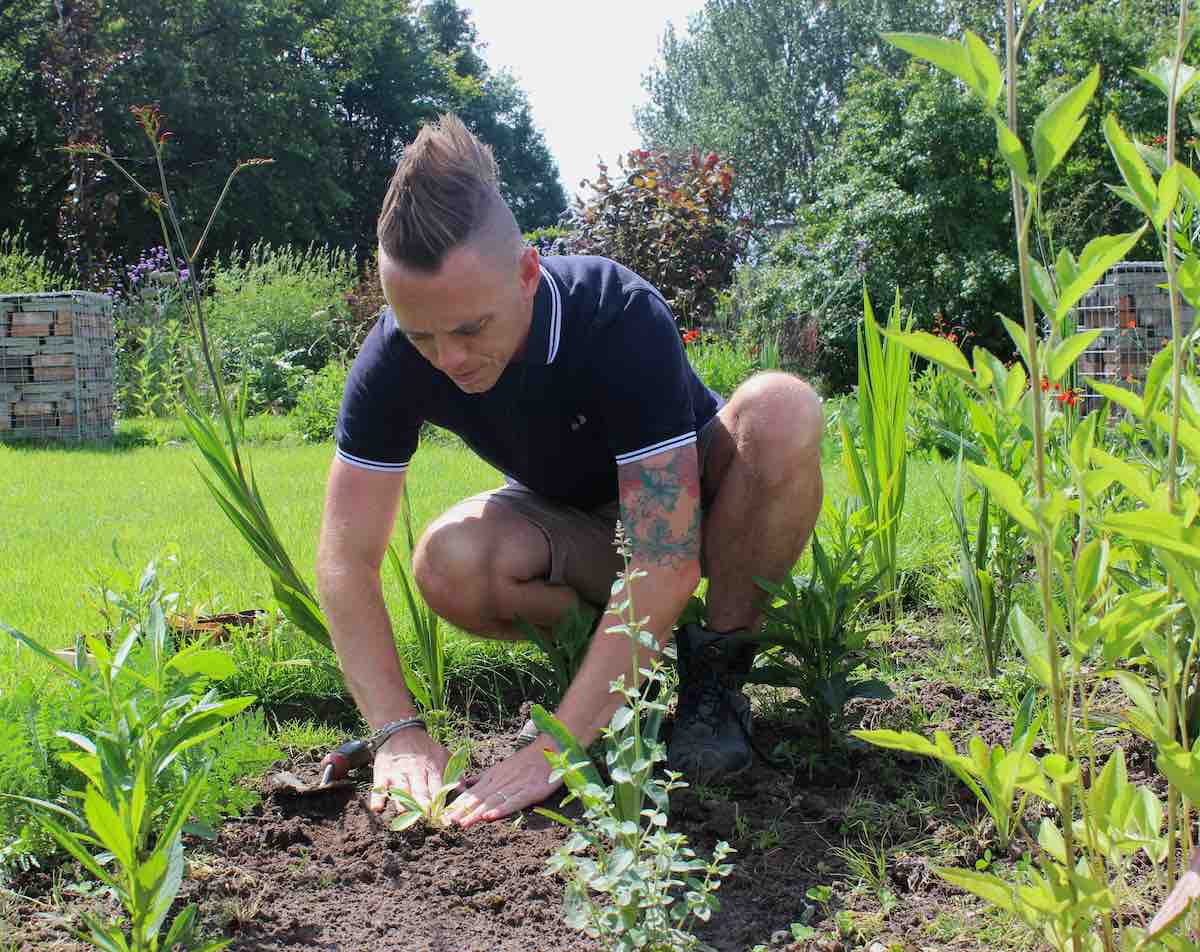Hi @grlg
Great question and sorry to hear your plants are getting ring barked and therefore damaging. For the benefit of the community, let me explain what ring barking is and why it can damage or even kill plants and shrubs.
What is ring barking?
Ring barking, also known as girdling, is a term used in gardening and arboriculture to describe the removal or damage of a complete ring of bark around the circumference of a tree or shrub's trunk or branches. This damage can severely affect the plant's health and, in extreme cases, lead to its death. It's a ring of stripped back bark that then hurts and damages the plants ability to uptake moisture and nutrients.
Understanding the Bark
Before diving into ring barking, it's helpful to understand the role of bark in a tree:
- Outer Bark - Protects the tree from pests, diseases, and physical damage.
- Phloem - Just beneath the outer bark, this layer transports nutrients and sugars produced by the leaves to the rest of the tree.
- Cambium - A thin layer that produces new phloem and xylem cells, essential for the tree's growth.
- Xylem (Sapwood) -Transports water and nutrients from the roots to the leaves.
When a tree is ring barked, the phloem and sometimes the cambium layers are disrupted, interrupting the flow of nutrients and water.
Causes of Ring Barking
Let's take a look at what may be causing your ring barking.
1.Animal Damage
- Rodents and Rabbits: Small animals like mice, voles, and rabbits chew on bark for food, especially in winter. Rabbits are the most common culprits for ring barking.
- Deer: Deer may strip bark from trees with their antlers or teeth.
- Mechanical Damage from Lawnmowers and Trimmers: Accidental collisions with gardening equipment can strip bark.
- Tying and Staking: Ties and stakes that are too tight can constrict and damage the bark over time.

2. Environmental Factors
Frost Cracks: Rapid temperature changes can cause the bark to crack, potentially leading to ring barking.
Sunscald: Sudden exposure to intense sunlight can damage the bark, especially on young trees.
3. Human Activities
Intentional Girdling: Sometimes done to kill a tree, such as when clearing land. Not in your case!
Improper Pruning: Poor pruning techniques can inadvertently strip bark.
What are the Symptoms of Ring Barking?
i) Wilting Leaves: Leaves may wilt and turn yellow or brown due to interrupted nutrient flow.
ii) Stunted Growth: The tree may exhibit reduced growth and fewer leaves.
iii) Bark Shedding: The bark around the damaged area may start to peel away.
iv) Dieback: Branches above the ring barked area may die off.
How to stop ring barking
1) Preventing Animal Damage
- Tree Guards: Install plastic or metal guards around the base of trees to protect from small animals and deer.
- Repellents: Use animal repellents to deter bark-chewing animals.
- Fencing: Erect barriers to keep larger animals like deer away from young trees.
In your case I'd maybe use some wire mesh around your plant until it recovers as the stems are so thin, this should reduce the potential of a hare, squirrel or other mammal eating through at night.
2. Avoiding Mechanical Damage
Careful Mowing: Be cautious when mowing or trimming near trees; consider creating mulch rings around trees to keep grass and weeds at bay.
Proper Staking: Use flexible ties and check regularly to ensure they are not too tight. Remove stakes once the tree is established.
How to healing ring barking damage
The best way to allow a ring bark to heal is to stop any further damage and then let them naturally dry and seal over. In the past people used to wrap the wounds but this can cause more harm than good as the bandages can trap bacteria and cause further infection, they can also suffocate the plants causing it to die slowly.
I hope that helps. Maybe set up a wildlife camera to see whats causing it and let us know!
Happy gardening
Lee Garden Ninja
-
Hi @grlg
Great question and sorry to hear your plants are getting ring barked and therefore damaging. For the benefit of the community, let me explain what ring barking is and why it can damage or even kill plants and shrubs.
What is ring barking?
Ring barking, also known as girdling, is a term used in gardening and arboriculture to describe the removal or damage of a complete ring of bark around the circumference of a tree or shrub's trunk or branches. This damage can severely affect the plant's health and, in extreme cases, lead to its death. It's a ring of stripped back bark that then hurts and damages the plants ability to uptake moisture and nutrients.
Understanding the Bark
Before diving into ring barking, it's helpful to understand the role of bark in a tree:
- Outer Bark - Protects the tree from pests, diseases, and physical damage.
- Phloem - Just beneath the outer bark, this layer transports nutrients and sugars produced by the leaves to the rest of the tree.
- Cambium - A thin layer that produces new phloem and xylem cells, essential for the tree's growth.
- Xylem (Sapwood) -Transports water and nutrients from the roots to the leaves.
When a tree is ring barked, the phloem and sometimes the cambium layers are disrupted, interrupting the flow of nutrients and water.
Causes of Ring Barking
Let's take a look at what may be causing your ring barking.
1.Animal Damage
- Rodents and Rabbits: Small animals like mice, voles, and rabbits chew on bark for food, especially in winter. Rabbits are the most common culprits for ring barking.
- Deer: Deer may strip bark from trees with their antlers or teeth.
- Mechanical Damage from Lawnmowers and Trimmers: Accidental collisions with gardening equipment can strip bark.
- Tying and Staking: Ties and stakes that are too tight can constrict and damage the bark over time.

2. Environmental Factors
Frost Cracks: Rapid temperature changes can cause the bark to crack, potentially leading to ring barking.
Sunscald: Sudden exposure to intense sunlight can damage the bark, especially on young trees.
3. Human Activities
Intentional Girdling: Sometimes done to kill a tree, such as when clearing land. Not in your case!
Improper Pruning: Poor pruning techniques can inadvertently strip bark.
What are the Symptoms of Ring Barking?
i) Wilting Leaves: Leaves may wilt and turn yellow or brown due to interrupted nutrient flow.
ii) Stunted Growth: The tree may exhibit reduced growth and fewer leaves.
iii) Bark Shedding: The bark around the damaged area may start to peel away.
iv) Dieback: Branches above the ring barked area may die off.
How to stop ring barking
1) Preventing Animal Damage
- Tree Guards: Install plastic or metal guards around the base of trees to protect from small animals and deer.
- Repellents: Use animal repellents to deter bark-chewing animals.
- Fencing: Erect barriers to keep larger animals like deer away from young trees.
In your case I'd maybe use some wire mesh around your plant until it recovers as the stems are so thin, this should reduce the potential of a hare, squirrel or other mammal eating through at night.
2. Avoiding Mechanical Damage
Careful Mowing: Be cautious when mowing or trimming near trees; consider creating mulch rings around trees to keep grass and weeds at bay.
Proper Staking: Use flexible ties and check regularly to ensure they are not too tight. Remove stakes once the tree is established.
How to healing ring barking damage
The best way to allow a ring bark to heal is to stop any further damage and then let them naturally dry and seal over. In the past people used to wrap the wounds but this can cause more harm than good as the bandages can trap bacteria and cause further infection, they can also suffocate the plants causing it to die slowly.
I hope that helps. Maybe set up a wildlife camera to see whats causing it and let us know!
Happy gardening
Lee Garden Ninja
-
 Lee Burkhill: Award Winning Designer & BBC 1's Garden Rescue Presenters Official Blog
Lee Burkhill: Award Winning Designer & BBC 1's Garden Rescue Presenters Official Blog



